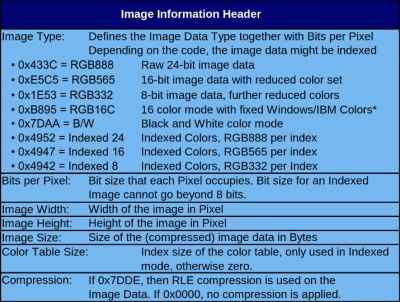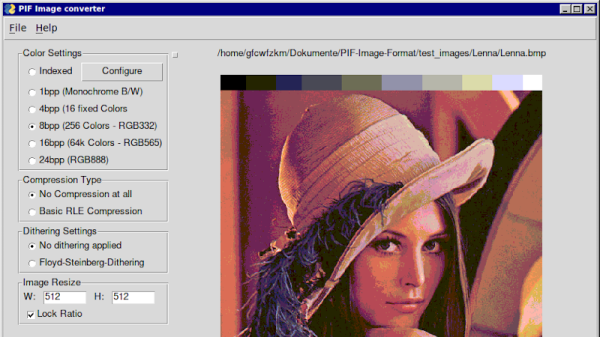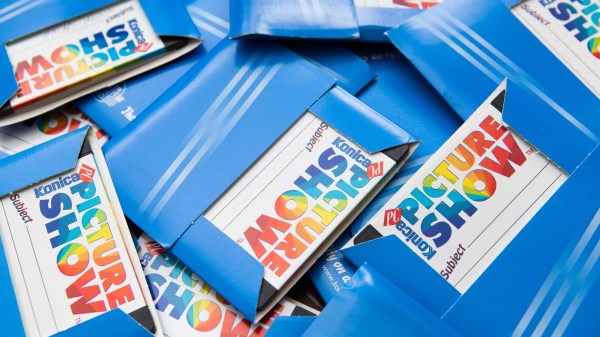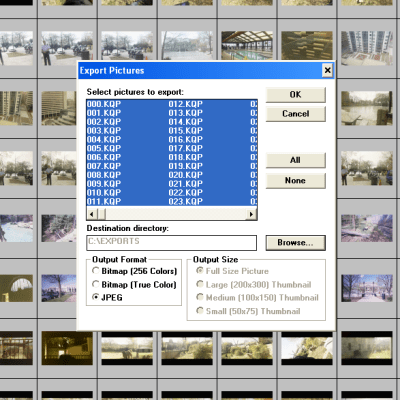Whether its one of those ubiquitous little OLED displays or a proper LCD panel, once you’ve got something a bit more capable than the classic 16×2 character LCD wired up to your microcontroller, there’s an excellent chance you’ll want to start displaying some proper images. Generally speaking that means you’ll be working with bitmap files, but as you might expect when pushing a decades-old file format into an application it was never intended for, things can get a little messy. Which is why [gfcwfzkm] has created the Portable Image File (PIF) format.
 This low-overhead image format is designed specifically for microcontrollers, and can be decoded on devices with at least 60 bytes of free RAM. Images stored with PIF not only require fewer computational resources to process, but equally important, take up less space on flash. The format supports both color and monochrome images, and the GitHub repo even includes a graphical Python 3.10 tool that lets you convert your images to either .pif files or a .h header file for embedding directly into your C code.
This low-overhead image format is designed specifically for microcontrollers, and can be decoded on devices with at least 60 bytes of free RAM. Images stored with PIF not only require fewer computational resources to process, but equally important, take up less space on flash. The format supports both color and monochrome images, and the GitHub repo even includes a graphical Python 3.10 tool that lets you convert your images to either .pif files or a .h header file for embedding directly into your C code.
[gfcwfzkm] has provided some source code to show you how to get the PIF library up and running, but as of the time of this writing, there isn’t any example code for using PIF within the Arduino environment. That’s no big deal for the old hands in the audience, but we’re interested in seeing how the community can make use of this file format once it’s available in a bit more beginner-friendly package. It’s one of the final unchecked items on the todo list though, so it shouldn’t be long now.
Of course nothing is wrong with using bitmaps to display images in your microcontroller projects, and there’s a certain advantage to fiddling around with the well-known image format. But if a new file type is all it takes to speed up access times and cram a few more images onto the chip, we’re definitely ready to upgrade.














